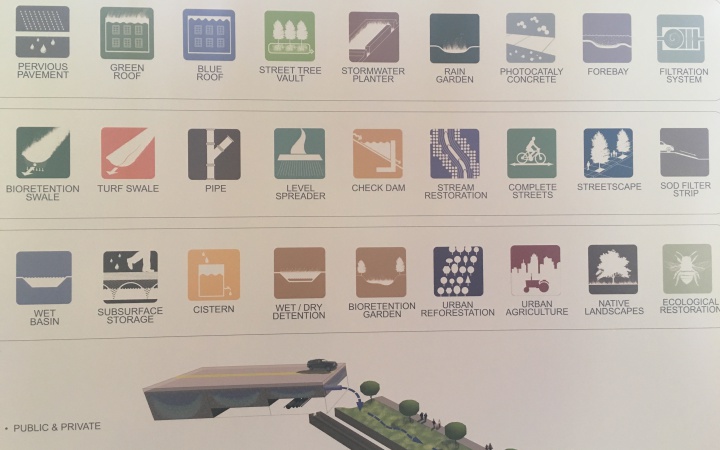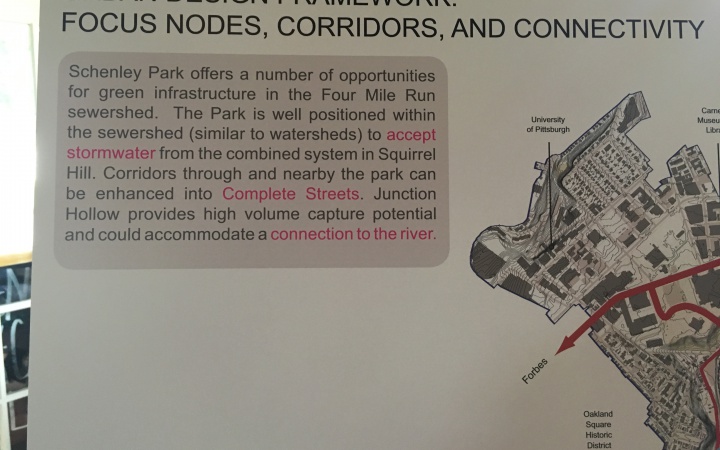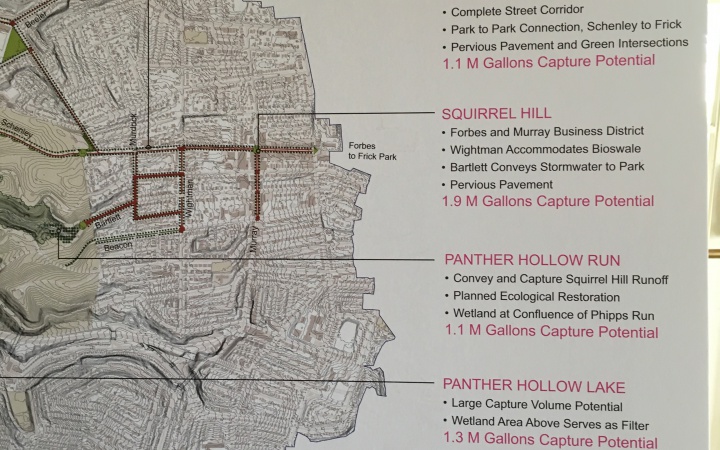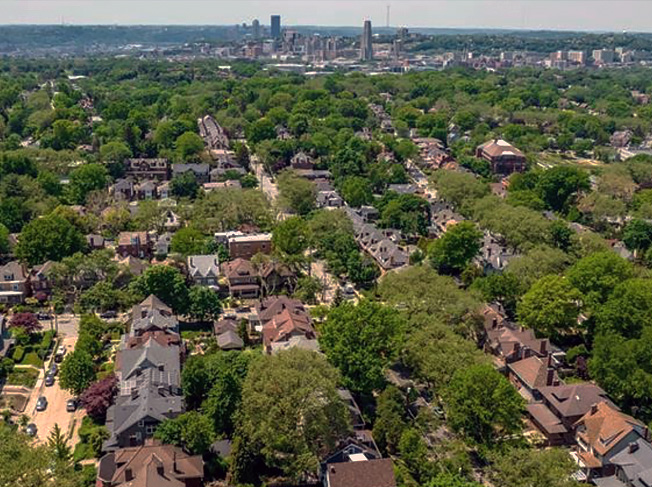Green Infrastructure Projects in Schenley Park and Beyond Take Shape
By Sonia Panic
If you picked up our latest Summer issue, you may have read about the city’s plan to redevelop the Four Mile Watershed and implement more green infrastructure aspects in the neighborhood. One of the goals in mind is to manage water quantity and quality. With this redevelopment, the new watershed is projected to capture the 19,682,000 gallons per single inch and a half rainfall. The teams from Phronesis Landscaping and Burns McDonnell have both seen their fair share of similar projects from design to completion and this project is no different.

Tools that may be used in the project
The Four Mile Watershed is being looked at from a “systems wide approach”, where each development affects the next. The first stage in this estimated 10 year project is to restore the Panther Hollow Watershed. Once the watershed is reconstructed to retain more water, green infrastructure such as permeable concrete and rain gardens will be constructed in the surrounding neighborhoods. At a recent meeting held by Phronesis and Burns McDonnell in partnership with Parks Conservancy, many residents expressed concerns with managing these new changes. The two teams assured the residents that in conjunction with the EPA, the city will be responsible for enforcing heavy fines as punishments for not maintaining the systems.

Urban Design Framework: Focus Nodes, Corridors, and Connectivity
Another major concern brought up by residents were the benefits of implementing such a huge project. Not only will this new watershed create opportunities for maintenance jobs, it will also revitalize the community, spur economic development, and increase pedestrian and bicycle transit.

Map of Potential Storm Water Capture
While talk of this project started in December of 2015, it has not progressed past the planning and design phase. A big focus for Tim Duggan, Landscape Architect from Phronesis, and Andy Sauer, Green Infrastructure and Stormwater manager at Burns & McDonnell, is community involvement. They’d like to see the community openly discuss the funding, aesthetics, and design of the infrastructure and watershed project. The more transparent this project is, the better the outcome. As one resident said, even if one fourth of the plan is implemented, it would be a tremendous benefit to the community. The next step is to share the designs with the Mayor’s office and prioritize the watersheds.





